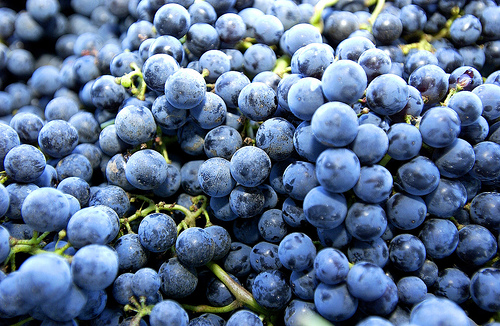June 18, 2012 —
The growing season in most states is in full swing now and you’ll soon need to be ready for harvest and crush. The problem is, it’s like getting prepared after you’ve received the hurricane warning – it IS happening, you just don’t when it will strike. The grapes are ripening, but the fruit won’t be ready until it’s ready. And when they are, you better be ready too. The best way to be prepared for harvest is to plan on the worst case scenario – all the fruit is perfectly ripe – all at the same time!
Here in Texas, the growing season is short because of the warm spring and lack of freeze at the beginning of spring, thus the harvest time frame is shortened as well. Missouri has had a cold and wet spring, so their harvest will be later. In Oregon and California, the harvest season is lengthened due to later bud break and a cool wet spring.
Steps to Prepare for Harvest:
1. Make sure your tanks are empty, cleaned and ready. Bottle all of the wine that may still be in tanks. It’s best to do this two months prior to anticipated harvest. This can be a challenge if you have a lot of wine in the tanks. It will take a lot of time, so plan this out. You may need to start bottling during the growing season.
2. Inspect all equipment needed for harvest a nd repair as necessary to ensure everything is working well. Also, make sure you have spare parts on hand for any equipment that might fail or need replacing. Think about your pumps, crusher/destemmer, press, chiller, forklift, trucks, mules, etc. You will not want to experience downtime due to a pump going out and no backup, for example.
3. Have all your yeast, nutrients, SO2, oak chips, tannins, etc. ordered and delivered. You will have to estimate how much you will need, and veraison is usually a good time to order.
4. Have your harvest labor locked in and ready to go when you need them. What do you need to provide them during harvest? Have everything they’ll need on hand in in good shape. Click here for recent blog on labor.
5. Make sure your lab is stocked and ready to roll, and all of your equipment is up to snuff. The last thing you want to find out during harvest is that your PH electrode is bad (this and anything similar in your lab should have a backup just in case). Some of the more complicated lab work may be able to wait if you need something, but make sure you have everything you need for PH, TA, YAN, and Brix/specific gravity including standards. If you’re outsourcing and lab work, make sure you have sample bottles and shipping worked prepared.
6. PLAN IT OUT! Have some idea of how much fruit of each variety there will be to harvest and what you are going to do with it. Which tanks you are using for what? If you’re using picking bins for red fermentation, do you have enough for both harvesting and fermenting? Make sure you have enough barrels ready to use after fermentation. Use your blending/tank allocation sheet and plan as if it all were coming in at once.
What you will find is that if it all came in at once, you’ve got a big problem! Now you know the worse case scenario. If this were to happen, what’s the plan? Do we work a third shift? Do we put the fruit in a cooler until the next day? Do you have an emergency source for tanks/barrels? IBC totes or bag-in-box shippers can make excellent short term storage if you have a large harvest, but only if you know where to get them. Think ahead and don’t be caught off guard.
7. Once you have the “worst case” plan, then you can create the more likely scenario plan. Which varieties typically come in first? Second? Later? Based on your conversations with vineyard managers, do you know which varieties are ahead or behind their normal schedule? Are there any vineyards/varieties that can hang an extra day or two without impacting fruit quality? Allocate your tanks and equipment based on that.
You may find out that you just need a little extra storage space. If that’s the case you can consider new tanks or alternative options. Or you might need to discuss custom crush services for your worst case scenario.
8. Notice where your bottlenecks might be. Is it at the press or destemmer? Typically you only have one of each, so it’s an obvious spot to review. If you have a big crusher but a smaller press, then you’ll have to plan for the press taking longer. If you are using special press cycles, how will that impact you? Are you planning any cold soaking, and if so, can your chiller handle bringing all of your must down to the desired temperature?
Your plan is created – great! Make sure your space is clean and everything is running smoothly. Now you can handle the grapes as they come in and adjust as needed. It may not be what you planned, but now you are prepared to handle whatever comes at you.
What’s going on in your neck of the woods? When do you anticipate your harvest? Any other pointers for new wineries to prepare for harvest?
Looking forward to great crush here in Texas! Hope you are too.
Salut!
Custom solutions for your winery.
Finely crafted wine blends and consulting
(because you’re not a Napa winery!)
Premier Wine Blends
888-767-7442
Email Us

Comments
Write a comment: